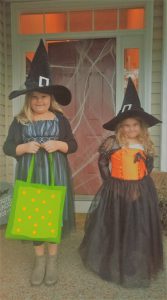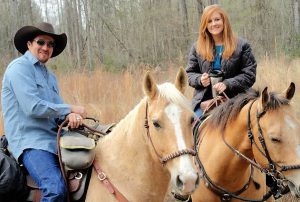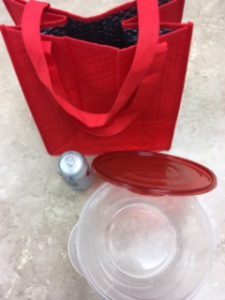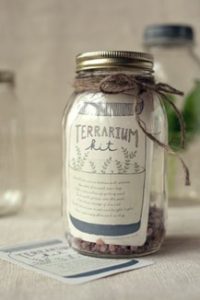by Melanie Taylor | Oct 31, 2017
From candy to pumpkins to the costumes, Halloween is a fun-filled time for kids and adults alike. However, it can pose dangers. To help make this year’s trick-or-treat a safe and fun time, follow these simple safety tips complied by the American Academy of Pediatrics.
CREATIVE COSTUMES:
Plan costumes that are bright and reflective. Make sure that shoes fit well and that costumes are short enough to prevent tripping, entanglement or contact with flames.
Consider adding reflective tape or striping to costumes and trick-or-treat bags for greater visibility.
Because masks can limit or block eyesight, consider non-toxic makeup and decorative hats as safer alternatives. Hats should fit properly to prevent them from sliding over eyes. The makeup should be tested ahead of time on a small patch of skin to ensure there are no unpleasant allergies on the big night.
When shopping for costumes, wigs and accessories look for and purchase those with a label clearly indicating they are “flame resistant”.
If a sword, cane, or stick is a part of your child’s costume, make sure it is not sharp or long. A child may be easily hurt by the accessories if he/she stumbles or trips.
Do not use decorative contact lenses without an eye examination and a prescription from an eye care professional. While the packaging on decorative lenses will often make claims such as “one size fits all,” or “no need to see an eye specialist,” obtaining decorative contact lenses without a prescription is both dangerous and illegal. This can cause pain, inflammation, and serious eye disorders and infections, which may lead to permanent vision loss.
Review with children how to call 911 if they ever have an emergency or become lost.
PUMPKIN CARVING TIME:
Small children should never carve pumpkins. Children can draw a face with markers. Then adults can do the cutting.
Consider using a flashlight or glow stick instead of a candle to light your pumpkin. If you do use a candle, a votive candle is safest.
Candlelit pumpkins should be placed on a sturdy table, away from curtains and other flammable objects, and not on a porch or any path where visitors may pass close by. They should never be left unattended.
HOME SAFETY:
To keep homes safe for visiting trick-or-treaters, parents should remove from the porch and front yard anything a child could trip over such as garden hoses, toys, bikes and lawn decorations.
Adults should check outdoor lights and replace burned-out bulbs.
Wet leaves and debris should be swept from sidewalks and steps.
Restrain pets so they do not jump on or bite a trick-or-treater.
TRICK-OR-TREAT TIME:
A responsible adult should always accompany young children during their neighborhood trick-or-treating.
Obtain flashlights with fresh batteries for all children and adults.
If your older children are going alone, plan and review the route that is acceptable to you. Agree on a specific time when they should return home.
Only go to homes with a porch light on and never enter a home or car for a treat.
Because pedestrian injuries are the most common injuries to children on Halloween, remind Trick-or-Treaters to:
- Stay in a group and communicate where they will be going.
- Remember reflective tape for costumes and trick-or-treat bags.
- Carry a cellphone for quick communication.
- Remain on well-lit streets and always use the sidewalk.
- If no sidewalk is available, walk at the far edge of the roadway facing traffic.
- Never cut across yards or use alleys.
- Only cross the street as a group in established crosswalks (as recognized by local custom). Never cross between parked cars or out driveways.
- Do not assume the right of way. Motorists may have a hard time seeing Trick-or-Treaters.
- Just because one car stops, does not mean others will!
- Law enforcement authorities should be notified immediately of any suspicious or unlawful activity
HEALTHY HALLOWEEN TIPS:
A good, healthy dinner prior to parties and trick-or-treating will discourage children from filling up on Halloween treats.
Consider purchasing non-food treats for those who visit your home, such as coloring books, stickers, or pens and pencils.
Wait until children are home to sort and check treats. Though tampering is rare, a responsible adult should closely examine all treats and throw away any spoiled, unwrapped or suspicious items.
Try to ration treats for the days and weeks following Halloween to prevent overindulging, which will lead to a stomachache and ruin the night’s fun.
Make sure the Halloween night is fun and safe with the suggested tips above. These tips will help guarantee you all a ghoulishly good time.
Source: American Academy of Pediatrics

Happy Halloween!
by Melanie Taylor | Apr 24, 2017

Russell and Julie McMillian, Gulf County 4-H Alumnae and 4-H Leaders
Russell and Julie McMillian both grew up in Gulf County and together have established a thriving business based on their love of horses. They now own a small farm in Dalkeith, just south of Wewahitchka, and their business Rockin’ M Ranch, consists of horseback riding lessons for beginners and beach rides for tourists and locals alike along the beautiful beaches of Cape San Blas.
How did this all begin? Russell and Julie both grew up as Gulf County 4-H members of the Big River Riders 4-H Club. They both participated in a variety of 4-H programs; including Horse Camp, Camp Timpoochee, Congress (now known as 4-H University), District Events, North Florida Fair Ag Judging, Area A and State 4-H Horse Shows, etc. They both learned the values of 4-H through learning how to raise and compete with their animals, agricultural commodities, leadership skills, public speaking, community service, good decision making skills, and much more…
As adults, they both went in separate directions, but still maintained their love of horses and the farm life. Russell began his career in flooring and tile work, while Julie received her education degree and taught Kindergarten at Wewahitchka Elementary School. After reconnecting as adults, they married on September 25, 2010 and turned their passion for horses into a full-time love by creating their own business, Rockin’ M Ranch. Russell still does flooring, tile work on the side, and helps his grandparents with their hay business. Julie decided to leave the teaching field, and she manages their business full time. She began giving beach rides on the Cape at the age of 14 and still loves it as much today.

Julie and Russell McMillian pictured with Brooke (left) and Hayleigh (right).
Russell began his time with 4-H at the age of 12 and Julie was 8 years old. As members of the Big River Riders 4-H Club, they adored their 4-H leaders, Mr. Jesse Eubanks and Ms. Jean McMillian (Russell’s grandmother), and the Gulf County Extension Director, Roy L. Carter (now retired), whose passion for horses was contagious. Julie explained that she was a very shy child and that participating in public speaking for District Events really helped her come out of her shell. They both loved learning the values of the four H’s: Head, Heart, Hands, and Health. They feel 4-H has helped them develop into productive adults with good decision-making skills and in-stilled in them the importance of giving back to their community. They have served as 4-H volunteers for the Big River Rider’s 4-H Club since Russell’s daughters joined 4-H years ago; Brooke (17) and Hayleigh (15) also ride horses and have competed in a variety of Gulf County 4-H programs throughout the years. Russell and Julie have also taught a variety of horse riding classes at multiple Gulf County 4-H day camps.
As 4-H and community leaders, their most important goal is to give back to the community that gave to them as 4-Hers growing up here. They really love introducing new riders to the love of horses and 4-H. On any day, Russell and Julie can be found throughout the county at various events supporting 4-H members and any youth for that matter.
When asked what advice she has for someone thinking about becoming a 4-H volunteer she said, “Do not have regrets…just do it. Do not be scared off by the fingerprinting and application process. It is quick and easy, and maintains the safety for you and the children. Get started! 4-H is a great opportunity for youth and adults.”
“As a 4-H extension agent, you can only hope to find 4-H volunteers as dedicated as Russell and Julie McMillian. Their passion and love of 4-H is infectious and draws in youth looking for a place to belong.” -Melanie Taylor, Gulf County 4-H Agent
For more information about Rockin’ M Ranch, please go to http://www.therockinmranch.com/. For more information about how to become involved in 4-H, either as a youth member or adult volunteer, visit florida4h.org or contact your local UF IFAS County Extension Office. 4-H offers a variety of roles for volunteers to share their passions, skills and interests.
by Melanie Taylor | Mar 23, 2017

Do you remember the 3 R’s? If you are over the age of forty you are probably thinking of a classroom, a teacher, and learning about Reading, wRiting, and aRithmetic. These are the basic standards for learning, of course. However, it is now 2017and the 3 R’s have a new meaning to a new generation of young people: Reduce, Reuse, Recycle!
In today’s society, we constantly hear concerns about the environment and how we need to implement changes to make a positive impact upon its future. It is nearly impossible to pay attention to any media without feeling bombarded by messages of conservationism. “Go Green!” “Green… it’s the new black.” “Reduce, Reuse, Recycle.” However, are these sentiments new? Think about it. “Give a Hoot… Don’t Pollute.” “Keep America Beautiful.” “Keep Our Forests Green.” The use, or abuse, of our natural resources has long been an issue debated by our nation. It has more or less been the price we have had to pay for progress; but regardless of one’s political views and beliefs, the fact that Earth is the only planet that will sustain human lives is a hard fact to deny. It is therefore critical that all of promote principles of conservationism for our future generations.
The practice of reducing, reusing, and recycling may be easily incorporated into many aspects of your everyday lives. As YOU reduce, reuse, and recycle in your daily lives, you will be teaching by example your own children at home. Knowing that youth learn by seeing and doing, they will be much more likely to implement the practices of reducing, reusing and recycling into their own daily lives if they see you practicing the 3 R’s in yours.
How does the Environmental Protection Agency describe each of the 3 R’s? Reduce the amount and toxicity of trash you throw away. One way is to turn off or unplug lights during the day. Doing so will save energy and help your lights last longer. Use food scraps, yard trimmings, and other organic wastes to create a compost pile. Adding the compost you make to soil increases water retention, decreases erosion, and keeps organic materials out of landfills. Reuse containers and products. There are many creative ways to reuse items, which might normally find their way into the waste stream: old shoeboxes may be used for storage, plastic containers for planters, etc. You can also donate or give away items rather than throwing these items away. For a large number of unwanted items, you can hold a garage sale. It is also encouraged to shop at garage sales before buying new!
Recycle as much as possible and buy products with recycled content. Recycling includes collecting, sorting and processing certain solid waste into raw materials for re-manufacture into new items. These all help to cut down on the amount of waste we throw away. They conserve natural resources, landfill space and energy.
In addition, the three R’s save land and money communities must use to dispose of waste in landfills.These are all things we can do daily with just a little thought and effort. In fact, businesses are making it easier for us every day. We can reduce our trash in many ways, but an easy way is to reuse water bottles instead of throwing them away after each use. We can use the reusable bags that many stores now offer for our purchases; this is a great alternative to using plastic shopping bags. Of course, we can all make more of an effort to recycle by collecting our newspapers, aluminum cans, plastic bottles and glass jars for local recycling centers. If there are not recycling centers in your area maybe you should start one or pursue your community leaders about the importance of having one.
A few points to consider…
- The average American produces about 4.5 lbs. of garbage per person per day. This equal 235 million tons a year.
- Recycling 1 ton of paper saves 17 mature trees.
- Recycling 1 aluminum beverage can saves enough energy to run a 100 watt light bulb for 20 hours, a computer 3 hours, or a TV for 2 hours. (Currently, 45% of aluminum cans are recycled.)
- Reduce and reuse by donating old clothes and items to charities.
By instilling the importance of the 3 R’s into today’s society we will be helping clean the planet for the future. After all, “A true conservationist is a man who knows that the world is not given by his fathers but borrowed from his children.” As quoted by John James Audubon. Our state 4-H service project theme for next year is the environment. Why not consider planning a club, county or district service learning project in honor of Earth Day?
Source:
United States Environmental Protection Agency , https://www.epa.gov
by Melanie Taylor | Dec 8, 2016
As the holiday season quickly approaches many people become overwhelmed with all of the activities, decorating, and shopping that needs to be completed. Here are a few tips to save energy, time and your nerves. Let’s begin with Five Steps to Seasonal Savings:
- Recognize Your Seasonal Stressors- Know your personal stressors—such as family, friends, work, travel, social outings and traditions (both old and new)—then you can be less stressed this holiday season. Marketing ploys sneak into every stressor, and retailers want to ensure they get their piece of the holiday pie by using marketing gimmicks to lure you into shopping with them. Do you find yourself with the overwhelming desire to get everything on your child’s list? If so, consider going without a list or setting limits, and communicate with your child. Often, parents do not involve their children in the holiday spending process. Children need help recognizing when and how they have been targeted and persuaded to want the latest and greatest item. Children also need to understand that a budget is necessary and saying “no” to an overpriced item is okay.
- Develop a Holiday Spending Plan—Make a Budget. Ask yourself: How much have I saved? How much can I save before the holidays? Am I comfortable creating debt? Am I comfortable saying “no”?Start with knowing how much you can spend and create a spending plan, which is critical for successful money management for the holidays and all year long. A few dollars from your paycheck each week adds up quickly over a year. You can also take advantage of weekly automatic transfers into your bank account, or join a holiday savings club at a local credit union. If your holiday budget shows you are spending more money than you have, then you’ll likely take on debt. If this is the case, you should also create a plan for paying off purchases made with credit. Prioritize your purchases and consider omitting purchases that require taking on debt.
- Create a List and Stick to It- Make sure you have a list of everyone you plan to buy for during the holidays and of other additional expenses. Decorations, cards, postage, gift wrap, food/entertainment, and travel are additional costs that can drastically impact the holiday budget. Don’t forget to use catalogs, internet surfing for comparison shopping, and barcode scanning apps. Shopping online also limits impulse purchases, and it allows you to avoid long lines, huge crowds, and the lure to eat out while shopping. Be sure to use coupons whenever possible, and be sure to take advantage of the year-end sales. Once you’ve researched and set your budget, you’re ready to start shopping.
- Consider Alternatives to Pricey Presents- If you have a large family, start by thinking outside the box. Consider a gift exchange by drawing names from a hat, which can allow you to put more thought than money into selecting a single gift. You can also buy a single gift for an entire family—perhaps an entertainment basket filled with DVDs and microwave popcorn. Oftentimes, thoughtful and more creative gifts can come from shopping with local businesses. Locally grown fruits and vegetables, honey, or an item from a local artist are just a few suggestions of local products. If you are feeling crafty, then you could make and give holiday arrangements such as centerpieces and decorations. Another idea for the holidays is to donate to a charity in someone’s name instead of gift giving. You can even take the idea of giving to charity to your office. Pool money you would have spent on gifts with your participating colleagues, draw a colleague’s name, and donate the money to a charity of his or her choice. Another gift idea for close friends and/or family is the “gift of time.” Create a coupon book or certificate that gives a loved one the gift of your time (a specific chore, a trip to the park, babysitting, slumber party for the kids).
- Fine-Tuning Your Financials- Use cash and/or debit cards when at all possible. Money coming directly out of your pocket will likely make you think harder about your purchase. If you are going to use a credit card, make sure you have a plan in place to pay it off when the bill is due. You also need to understand the allure of paying with credit. When you’re not paying with “real” money, your buying can easily get out of control, and the shopping process may not seem as painful in that moment. It may be appropriate to tell your older children how much they each have in the budget for holiday spending. When the family is on the same page, it can alleviate some stress. Refocus your family’s thoughts from the material goods to the real meaning of giving and receiving. Knowing your specific situation, making informed decisions, and communicating with loved ones can reduce the effects of holiday stressors.
Here are a few affordable DIY gifts that will be truly appreciated by the recipient.
 For the gardener in your life: Terrarium Kit
For the gardener in your life: Terrarium Kit
Materials:
- One – 3 1/2″ x 7″ canning jar with top
- Small stones (enough to fill 1 inch in jar) You can buy pretty river rocks at your local garden shop or just collect some stones outside.
- A few tablespoons of activated charcoal (found at any pet store’s aquarium section)
- 1 small Ziploc bag
- 3 1/2″ x 5 1/4″ printed terrarium instructions card on card stock (download from witandwhistle.com or create your own)
Step 1: Put about an inch of small stones in the bottom of a jar.
Step 2: Slide an instruction card into the front of the jar. Secure the card amongst the rocks.
Step 3: Pour a few tablespoons of activated charcoal into a small Ziploc bag and add it to the jar.
Step 4: If you’re feeling crafty you could add a decoration or two (plastic or clay mini mushrooms, insects, gnomes, fairies, etc.) in your terrarium kit.
Step 5: Tie some twine or ribbon around the jar, and you’re done. You don’t even need to wrap it!
 For someone you would like to pamper: Basic Silk Bath Bomb
For someone you would like to pamper: Basic Silk Bath Bomb
Materials:
- 1 cup Citric Acid (found in canning section of grocery store)
- 3 cups Baking Soda
- 1 teaspoon Essential Oil (purchase at local health food store)
- Witch Hazel Spritz (purchase in pharmacy section)
- Dry Pigment Colorant – if using
- Round mold to shape the bath bomb (Molds are round plastic ornaments found at your local craft store.)
Directions:
- Blend the citric acid and baking soda—add colorant and fragrance oil.
- Spritz, Witch Hazel onto your batch using a squirt bottle with one hand while stirring with the other until the bomb sticks together when squished. (it will have the consistency of wet sand)
- Form the bomb in the molds.
- Air-dry for 3 or 4 hours spritzing a few times – allow to set overnight (The Witch Hazel forms a crust on the outside that prevents them from cracking and falling apart; however, they’re still fragile)
- Wrap in tissue paper or cellophane. Tie a bow and you’re done.
Other DIY ideas…homemade soaps, herb infused oils, jams and jellies, baked goods and hot cocoa mix. More ideas can be found in last year’s post, Making the Holidays More Affordable.
When we think of the holidays, we often think about family, togetherness, giving, and celebrating. While the holiday season should be a time of enjoyment, there are many events associated with the season that can cause stress. Remember in the long run the memories will be of time spent together, not the gifts they received. So, be sure to plan ahead, take a deep breath and enjoy the special holiday moments.
If you have further questions, please contact your local UF/IFAS Extension Office. Many offices offer seasonal programs to help both youth and adults prepare for the holiday season.
Resources:
“Five Steps to Seasonal Savings” – UF/IFAS EDIS Publication #FCS5267
“Managing Stress During the Holidays” – UF/IFAS EDIS Publication #FCS5266
witandwhistle.com
by Melanie Taylor | Mar 24, 2016

Use St. Patrick’s Day to learn about Irish culture in your 4-H club
I just discovered a few years ago that my great-grandmother, whom I never met, was an Irish redhead. I found this very exciting. It made me much more interested in learning about the history of St. Patrick’s Day, beyond wearing green. We live in a culture where we look for the next person or event to celebrate. For those who are Irish, St. Patrick’s Day is a time to reflect and celebrate their culture and traditions. So, although you may not be Irish, why not learn more about the Irish culture and why they are proud of their heritage? At your March 4-H club meetings, it would be fun to celebrate St. Patrick’s Day and incorporate the four-leaf clover and relate it back to the 4-H clover and what they both represent. Whether you are a 4-H leader or a teacher or parent looking for creative ideas, I hope you enjoy this brief history lesson and a few suggestions.
Let’s start from the beginning…
Who was St. Patrick? St. Patrick is the beloved patron saint of Ireland. The Irish are famous for spinning exaggerated tales. Despite the infamous stories traditionally attributed to St Patrick, this is what we actually known about his life. We do know that St. Patrick was born in Britain and that at the age of 16 was captured by Irish raiders who attacked his family’s estate. He was then transported to Ireland where he was held captive for six years, living a solitary, lonely life as a shepherd. It was then that he became a devout Christian, embracing his religion for solace. From his writing, we know that a voice, which he believed to be that of God, spoke to him in a dream, urging him to leave Ireland. He did. Walking nearly 200 miles, St. Patrick escaped to Britain and undertook serious religious training.
After 15 years of study, Patrick was ordained as a priest and sent to Ireland. His mission was to minister to Christians and to convert the Irish, then pre-dominantly pagans, to Christianity. Because St. Patrick was familiar with the Irish language and culture from his years of captivity, he chose to incorporate Irish ritual and symbols into his teachings rather than to eradicate Irish beliefs.
Why Do We Celebrate St. Patrick’s Day in America? The history of St. Patrick’s Day in America begins with Irish soldiers serving in the British army. The celebration’s focus is based on a tale of the Irish and evolving political power. The very first parade in New York City in 1762, not only helped the homesick Irish soldiers connect with their roots through the familiar strains of traditional Irish music, usually featuring bagpipes and drums, but also helped them to connect with one another, finding strength in numbers. Over the years as nearly a million Irish immigrants fled to America in the wake of the Great Potato Famine, St. Patrick’s Day parades became a display of solidarity and political strength as the often ridiculed Irish immigrants were frequently victims of prejudice. Soon enough, however, their numbers would be recognized and the Irish would organize and exert their political muscle, becoming known as the “green machine.”
Today, although less religious, St. Patrick’s Day celebrations continue to be a show of Irish strength and patriotism. So, put on your GREEN and get ready to celebrate!
4-H Club Meeting, Classroom, and Family Theme Ideas for March:
1) During a meeting or event read a “thought for the day” and use an Irish quote.
Example: May your blessings outnumber
The shamrocks that grow,
And may trouble avoid you
Wherever you go.
-An Irish Toast
2) Encourage the youth to wear green.
3) Provide or encourage youth to bring themed snacks to share, such as,
- Sliced fruit designed in shape of a rainbow, with vanilla wafers as the pot of gold, and yogurt fruit dip
- Rice Krispy treats colored with green food coloring and cut into four-leaf clover
- Green colored pudding or popsicles.
- Green fruit and vegetable trays (cucumbers, peppers, apples, grapes, kiwi).
4) “Make and Take” crafts, such as,
- Handprint four-leaf clovers with green paint on white paper
- Origami and/or construction paper four-leaf clovers.
5) Share these Fast Facts about Four-Leaf Clovers:
- There are approximately 10,000 three-leaf clovers for every “lucky” four-leaf clover.
- There are no clover plants that naturally produce four leaves, which is why four-leaf clovers are so rare.
- Today, four-leaf clovers are associated with St. Patrick’s Day, but they appear in centuries-old legends as symbols of good luck. The Druids (ancient Celtic priests) said they could see evil spirits coming and have a chance to escape in time. Four-leaf clovers were Celtic charms, presumed to offer magical protection and ward off bad luck. Children in the Middle Ages believed if they carried a four-leaf clover, they would be able to see fairies. The first literary reference to suggest their good fortune was made in 1620 by Sir John Melton.
- The leaves of four-leaf clovers are said to stand for faith, hope, love, and luck.
- It’s often said that Ireland is home to more four-leaf clovers than any other place, giving meaning to the phrase, “the luck of the Irish.”
If you have a passion for cultural heritage, consider becoming a 4-H volunteer. We need volunteers willing to share their rich cultural heritage with the next generation so that they can grow into a culturally competent workforce of tomorrow. For more information, contact your local UF/IFAS Extension Office or visit http://florida4h.org/volunteers.







